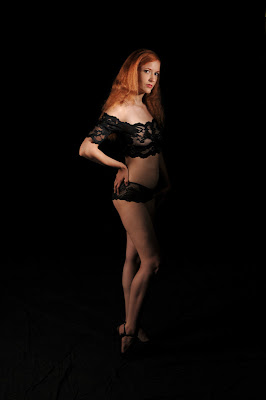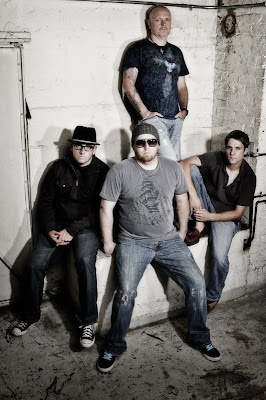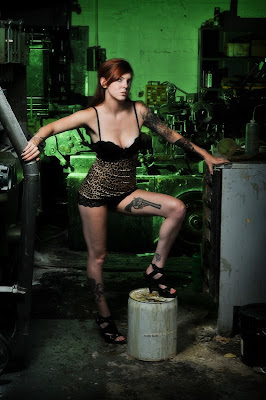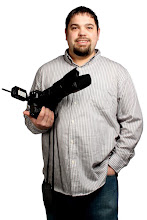
Hey everyone. Glad to see you found your way back. It's been a typical week for us over at RedDoor. Studio shoots, on location corporate work, and tonight we have a wedding. All in all it's been an eventful week. Last Sunday my good friend Frank Tuttle of Tuttle Images came down to shoot and brought along a few models with him. We spent the day working our way around the studio, shooting different themes, and sets. It was a good day. It's nice to have time to shoot just for fun. No real purpose, no one to please but yourself(although sometimes we can be our own hardest critics). Above is Grace. She is a wonderful model from the Columbus area. Such a pleasure to work with. She had many, many different looks, and the ability to "turn it on" on command.
For this particular shot, Frank did the lighting setup. I think he did a wonderful job. The main in this situation was a gridded strobe camera right about 2 feet from the subject's face around f/5.6. Fill was from a brolly box camera left and feathered way up roughly f/4. Below is a diagram showing the setup.
Hit the jump for more lighting setups, shots, and even a little video showing Franks workflow(and dancing that day)!
Like I said, Grace was wonderful to work with, and she had so many different looks that we were able to move around the studio quickly. Here, we did what's commonly referred to as Clam Shell Lighting. We placed a 5foot octobox above grace set to roughly f/5.6. Just below her face we had a strip box set to f/4. This gives us a high key, almost shadowless "glamour shot" of grace and her wonderful skin. Notice the two distinct catch lights in her eyes? One from the lower strip box, and one from the upper octobox. There was about a 2 foot gap between the two boxes in the front that we shot through.
A helpful tip for shooting this setup: The idea is to get a high key, bright image. To do this, we often times "open up" our aperture by one stop. For example, this setup metered at around f/5.6, but to get the brighter look, we shot at f/4. This made the image 1 stop brighter than it would have been at f/5.6.
While Grace was a wonderful model, it was Casey that took the "prize" for best outfits. First she came out in what I would call "50's housewife attire" and had the attitude to go with it. It was great. She posed on several different sets, one of which being the "industrial area" of the studio. The idea for a shot like that is to make her look as out of place as possible. It puts an emphasis on her, drawing your eyes in. She was a wonderful sport, shooting the below shots even though getting her leg up that high with heels on was difficult.
and of course what 50's housewife would be complete without her "Betty Crocker" cookbook:
Shad even talked me into stepping in front of the camera for a shot or two:
But not to be outdone, Frank shows us his great interaction with the models, and of course his dancing skills:
Thanks for stopping in and checking out my latest work. See you again soon. Jason
Read more on this article...
 Group Photo By Wendy Ramsey
Group Photo By Wendy Ramsey





